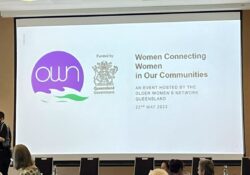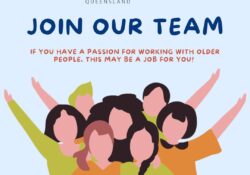Homelessness is on the rise in our community with over 105,000 people experiencing homelessness every night in Australia. Homelessness includes people who are sleeping rough, as well as people who are staying in temporary, unstable or substandard accommodation.
Homelessness does not discriminate and can affect anyone – from young, single people to families with children, to our older population. A staggering 20,000 people in Queensland are experiencing homelessness.
Homelessness is not a choice. The biggest cause of homelessness is family and domestic violence, followed by financial difficulties. The largest proportion of Australia’s homeless population are unseen, living a vagrant lifestyle, moving from one place to the next, are often forgotten, and can become lost in the ‘system’.
There is strong evidence that there has been a substantial increase in women over the age of 55 becoming homeless. It has been found that there is a commonality in relation to women presenting with a housing crisis. These generally include a lack of financial resources and assets, being forced out of the workforce early, insufficient superannuation and savings, discrimination in the housing market, are widowed, may have poor health or serious illness, and may have been involved in an abusive relationship. Many are homeless for the first time, primarily due to poverty and unaffordable housing.
The physical and emotional impacts of homelessness on older people includes social isolation, a higher risk of early death, an increased likelihood of medical conditions such as heart attacks, stroke, organ problems, and mental health. Homelessness has also been linked to depression and respiratory disorders.
It is evident that substantial differences in housing costs combined with different levels of rental security have a serious impact on Australians dependent solely on the age pension.
The cost of social housing rent is generally capped at 25% of an individual’s income, and in many cases, is manageable, however, many older private renters, are using a large proportion of their income to pay their rent. There is also lack of security for people in the private rental market. Without available, affordable housing, some people are falling through the cracks, into homelessness.
With a significant increase in the over 55’s population over the coming decades, and the number of Australians aged 75 and over expected to increase three-fold over the next 20 years, the number of people who are at risk of homelessness is expected to increase significantly.
Ensuring that all Australians have access to affordable housing has become a broad policy priority across all levels of government. Access to secure, safe, affordable housing, and a place to call ‘home’, is an essential foundation to the health and wellbeing of all individuals.
Meeting the complex challenge of housing affordability in Queensland requires a partnership approach involving all levels of government, the corporate and business sectors, the community services industry and the broader community. There are a range of strategies, reforms and policies currently influencing and impacting housing and homelessness in Queensland.
The Australian and Queensland Governments are delivering significant reforms to reduce homelessness in Queensland through a joint investment of $114.84M from 2015 to 2017, in partnership with the community services sector. This will provide existing and new homelessness initiatives with a priority on services for women and children experiencing domestic and family violence, young people, and children who are homeless or at risk of homelessness. For further information on Homelessness, please visit Homelessness Australia, www.homelessnessaustralia.org.au


